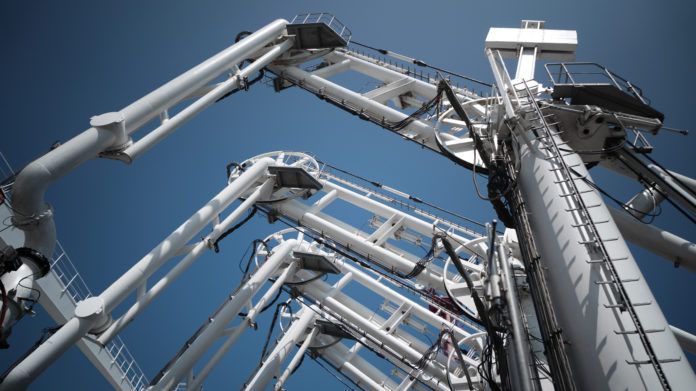The shale revolution has facilitated considerable U.S. domestic natural gas production. Today there are multiple sources of prolific domestic natural gas production that keep the U.S. market well-supplied, affordably priced, with little to no pricing volatility compared to pre-2008 historic norms.

U.S. natural gas production is anticipated to hit a record level in 2019 to as much as 98 Bcf/d.
The rise in U.S. natural gas production has propelled U.S. energy exports of not only LNG and commodity chemicals, but also crude oil and refined products. There are currently three active LNG export facilities, with a total capacity of five Bcf/d, that account for almost 7% of the current 75 Bcf/d U.S. natural gas market.
There is still considerable room for additional U.S. natural gas exports, which is reflected in the number of LNG export project announcements that sum to a potential 45 Bcf/d in new incremental capacity, and if developed, most of which will be located on the Gulf Coast.
The international LNG market has been growing at a healthy pace over the past decade, particularly the last five years. This market continues to expand at an average pace of almost 10% per year, or almost four Bcf/d in sales terms. The largest markets are in Asia (Japan, South Korea, and China) and India.
While Japan is currently the largest market for international natural gas imports, the Japanese natural gas market is growing at a very slow pace of less than 1% per year. China, on the other hand, while smaller in absolute terms, is the fastest growing Asian natural gas market at about 8% per year.
At current growth rates, Chinese imports will outpace those to Japan in the next five years. Thus, current events impacting Chinese trade and economic growth will be critical if the announced Gulf Coast LNG export facilities are to materialize. There are several critical factors that must be resolved before the U.S., and the Gulf Coast, can achieve its full LNG export potentials.
First, the ongoing trade war with China has to be resolved. At minimum, this trade war creates a considerable degree of uncertainty; something that is an anathema to large LNG capital investments ($9 billion to $12 billion each).
The longer the trade war continues, the greater the uncertainty and the less likely any party (LNG buyers or LNG sellers) will enter into the complicated longer-term contracts needed to financially backstop these large LNG export facility investments.
Second, the U.S. needs to gain more international market share. U.S. LNG exports have seen one of the fastest growth rates in international markets over the past year.
However, the U.S. is still a very small player in the global LNG market at this time. U.S. LNG export volumes still fall short of many other countries that include those in the Middle East and Australia, both of which have been moving as much as 6 Bcf/d to 12 Bcf/d of volumes compared to the U.S. current level of five Bcf/d.
This competition for international market share, particularly in the current LNG buyers’ market, will continue to be fierce.
Third, the global LNG capacity “overhang” in the market need to be eliminated. The international LNG market is currently a buyer’s market:
There is considerably more LNG export capacity than there is LNG purchasing interest. Current estimates have this international LNG capacity overhang at about 20%, or 10 Bcf/d of excess export capacity. This capacity must be absorbed before developers start to actively pursue the next generation of capacity investments.
Current conventional wisdom expects this LNG liquefaction capacity overhang to start burning off in the 2021 time period. However, the economic and geopolitical uncertainties could push this overhang out several years, thereby delaying new incremental investments along the Gulf Coast, including those announced for Louisiana during this critical time period.
Lastly, all boats—including those loaded with LNG—rise with the economic tide of prosperity and the current wave of economic weakness needs to pass if future LNG export facilities are to be developed in the 2021 time period.
However, it is difficult at this time to determine whether the currently emerging economic weakness (particularly in Asia) is just a temporary aberration, generated by a considerable level of current market uncertainty, or a structural change that reflects the ending point of a decade’s worth of global economic expansion.
Growing inventories and a slowing world economy (particularly in Asia) will weigh heavily in global natural gas demand, potentially pushing out many Gulf Coast LNG projects scheduled for commercial operation in the 2021-2022 time period.
Resolution of these issues is critically important for Louisiana, since a large portion of our future industrial capital investments is concentrated in LNG export terminal development. Currently, there are at least ten LNG facilities that have been announced for the coastal Louisiana region, accounting for as much as $58 billion in capital investment.
Continued uncertainty will only serve to push these investments out to later years and, if this uncertainty lingers into early 2020, could push these projects into the limbo-land of development ambiguity.
David E. Dismukes is a professor and the executive director of the Center for Energy Studies at LSU. He holds a joint academic appointment in the department of environmental sciences where he regularly teaches a course on energy and the environment.



